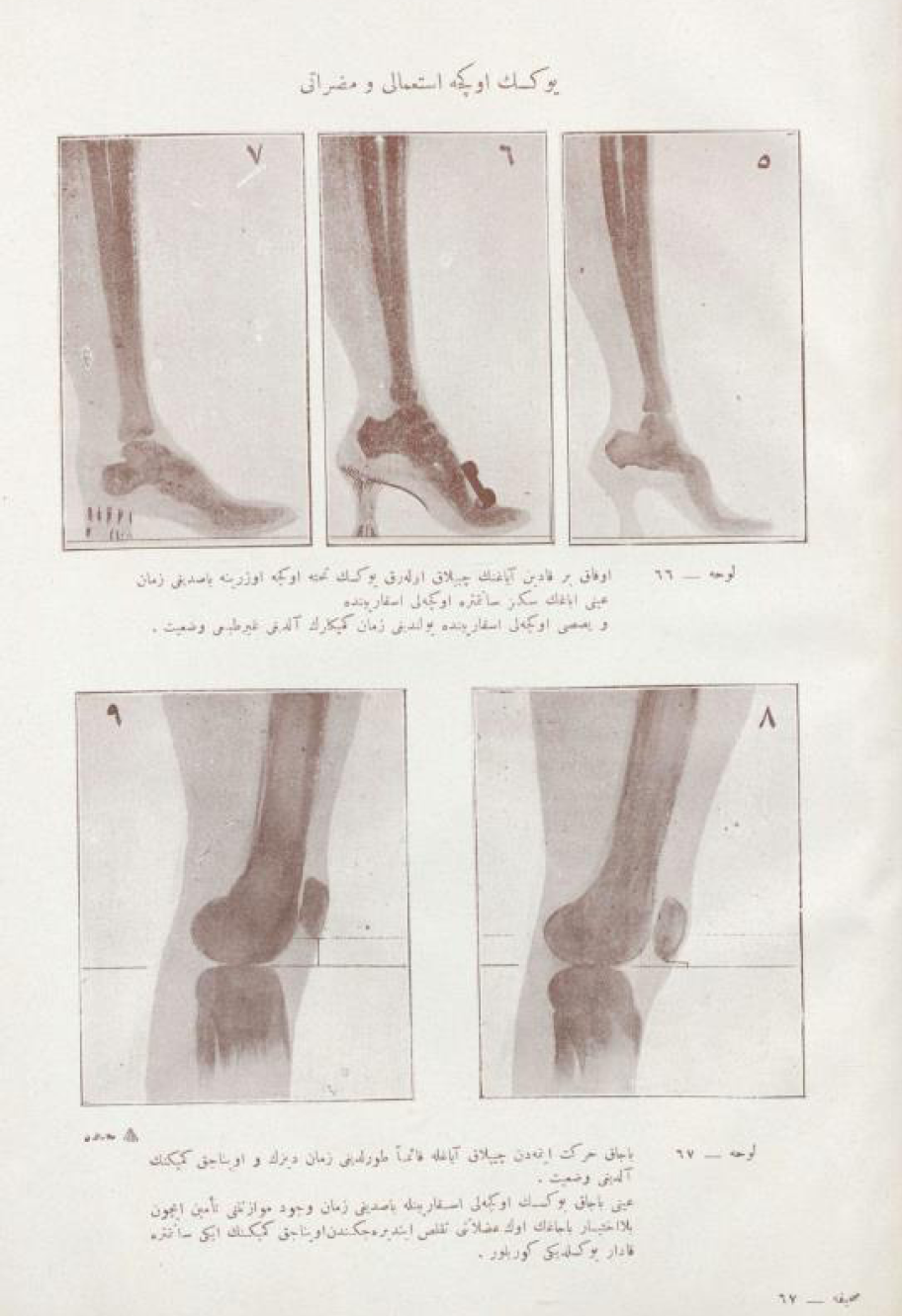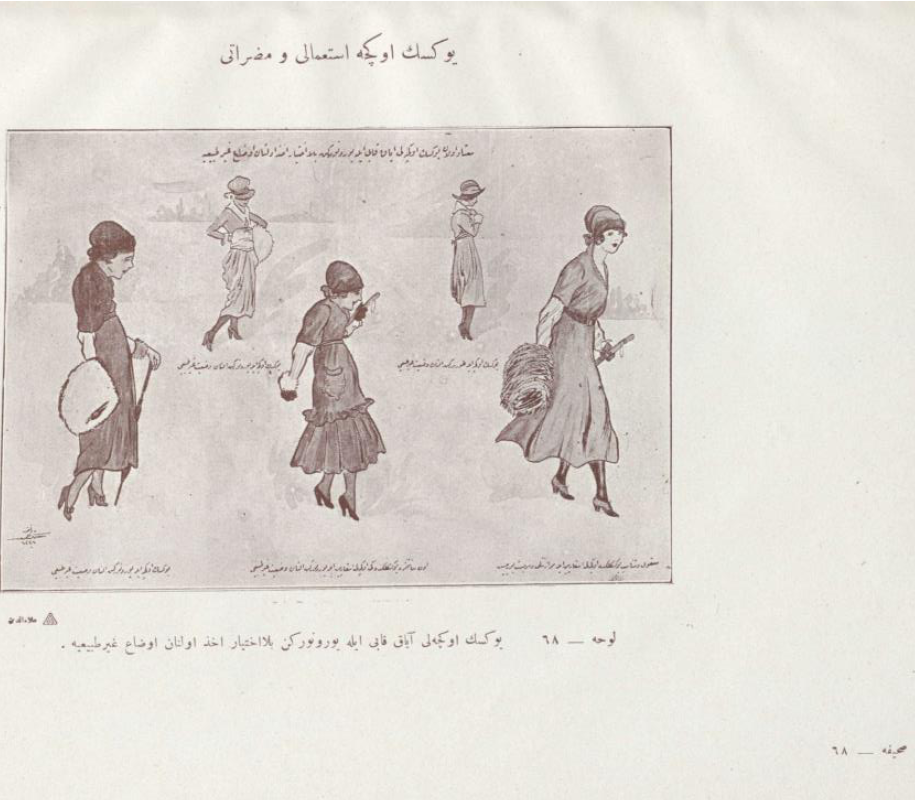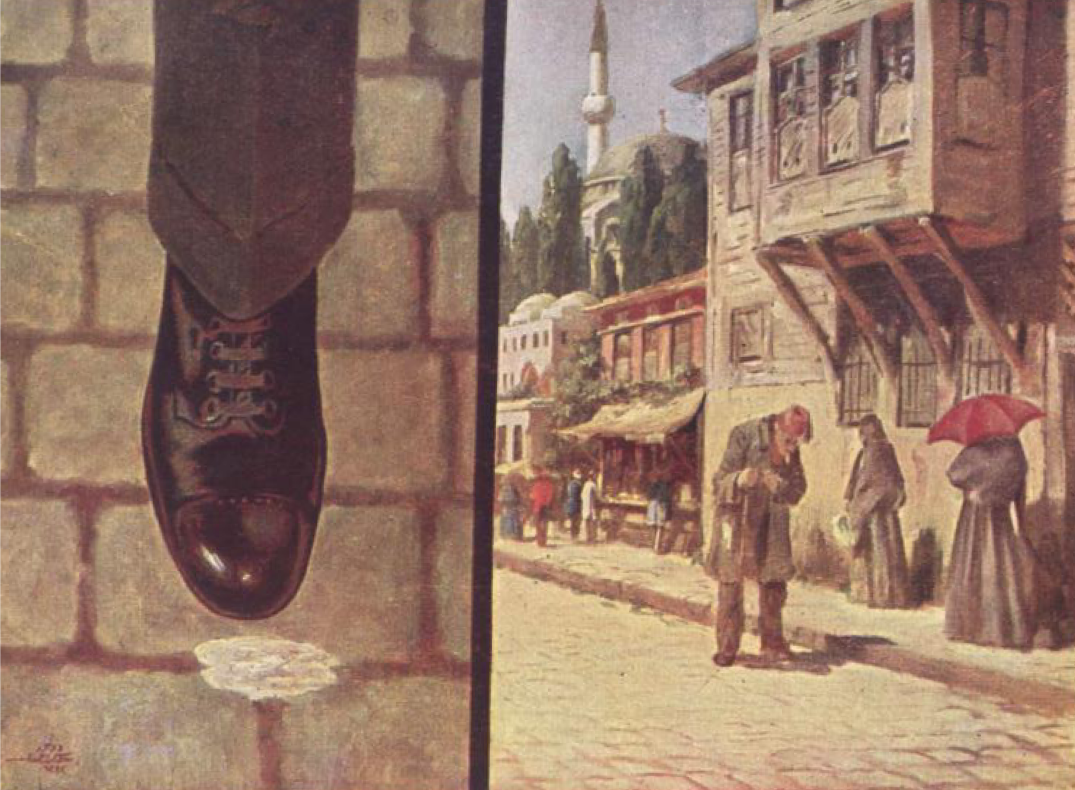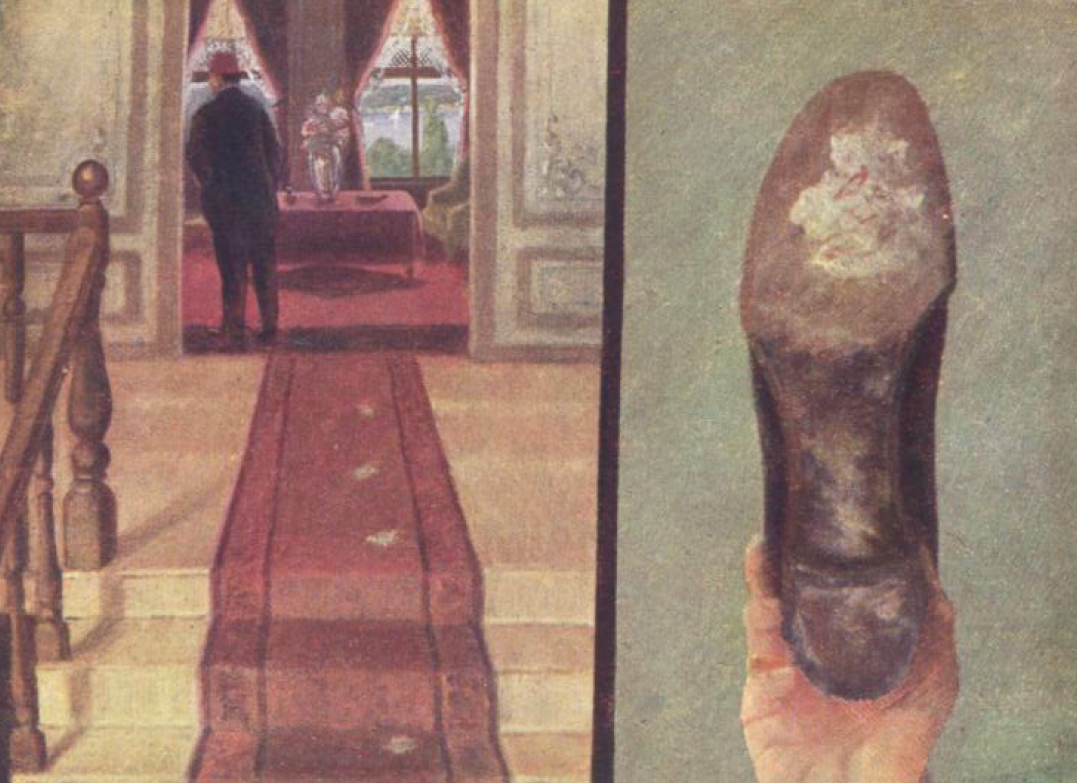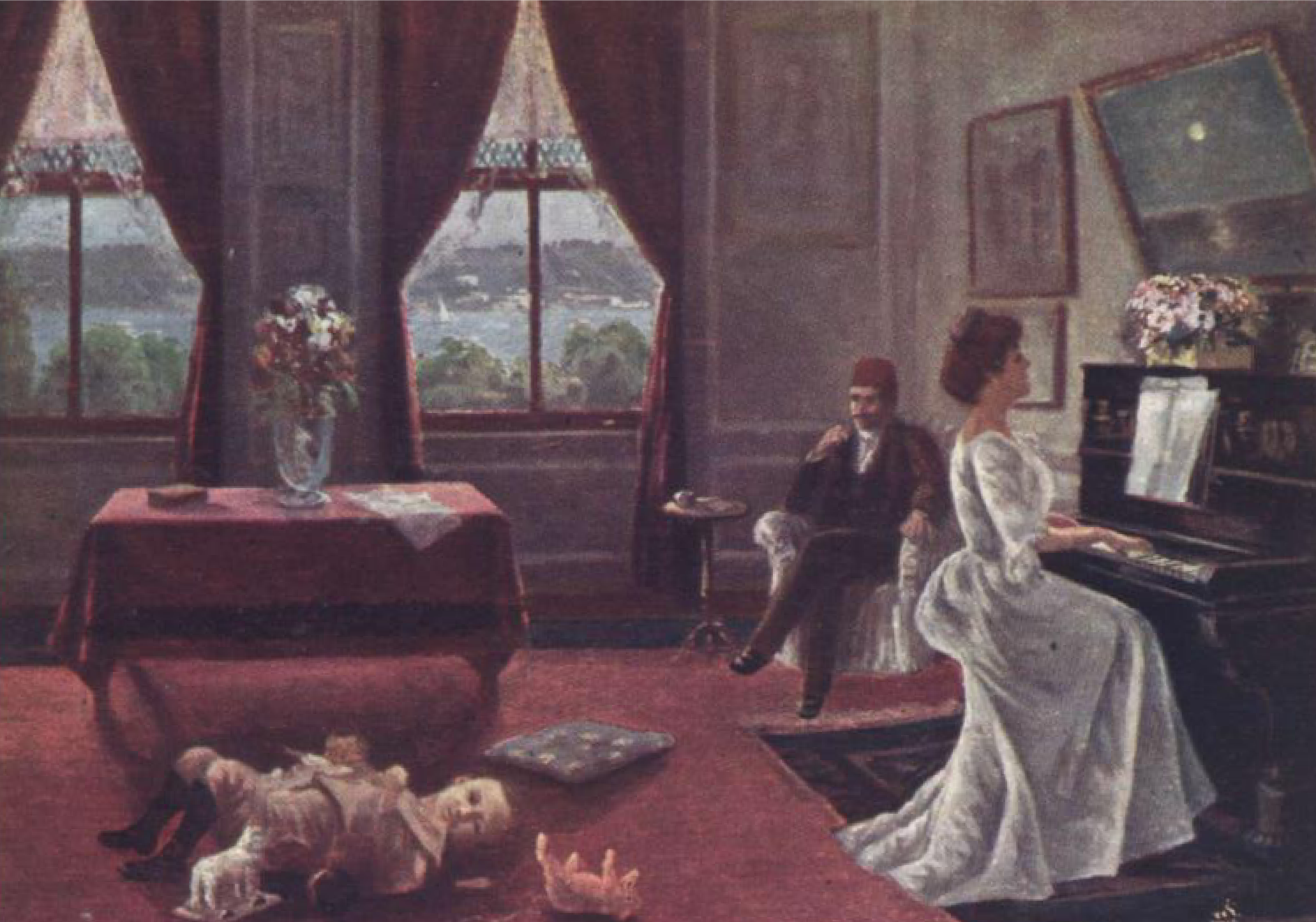Introduction
In the first quarter of the twentieth century, health and hygiene-themed exhibitions and museums became prevalent communication tools for public health throughout the world. However, the primary motivation behind their establishment as medical museums was the educational value they added to medical training, and these museums became central to instruction at medical schools in the nineteenth century (1). This article presents an overview of the origins of museums of medicine, health and hygiene, their role in the Ottoman/Turkish context; and how they gained and lost their prominence. It then proposes ways in which these museums can be instrumental in our fight against infectious diseases and social injustices in the field of biomedicine.
The Origins of The Medical Museum
The sixteenth-century practices of collecting ‘nature’ and the Wunderkammer¹ collections of the early modern period could be considered prototypical medical museums. The origins of the Western medical museum are closely connected to the emergence of natural history as a discipline of humanistic inquiry as well as the revival of materia medica in medical thought and pedagogy. Paula Findlen writes that the typical mid-sixteenth-century physician viewed the study of nature as “the foundation of good medical and pharmaceutical practice.” (2). By the end of the sixteenth century, the study of medicinal simples such as vipers used as ingredients in theriac² became a requirement for obtaining a medical degree at European, particularly Italian universities and the corpus of expertise to establish oneself as a physician required knowledge of natural history (2).
The collections of nature accumulated by apothecaries, chemists, and physicians, or gathered by prominent members of society, facilitated the practical training of apprentices without having to send them on costly journeys (3). Demonstration and observation in the medical curriculum became more common thanks to the university botanical gardens and their natural history museums (2). Museums and botanical gardens were “thoroughly integrated into the teaching of materia medica in Italian universities” by the seventeenth century (2).
Two of the most notable collectors of medical specimens at the end of the eighteenth century were the brothers William and John Hunter. By the time he passed away in 1793, the latter’s collection had boasted 14,000 items (4). Hunter’s collection was later acquired by the British government and assigned to the Company of Surgeons in 1799 after the Royal College of Physicians turned it down (4). The collection, which Hunter had used for teaching, research, and demonstration purposes, was re-established as a museum in 1813. As anatomy became a key component of medical education, museums became as important as dissecting rooms, and the Hunterian collection served as “a model for other museums in Britain and beyond” (4)³. Traditions of apprenticeship which involved the use of a master physician’s personal collection to train medical students was gradually replaced by substantial school museums and their collections (1).
Museum Collections and Medical Education in The Ottoman Empire
One of the first natural history museums of the Ottoman Empire was established as a part of the Mekteb-i Tıbbiye-i Şahane (Faculty of Medicine, est. 1827) in Istanbul where many of the leaders of the ‘Jön Türkler‘ (Young Turks) movement were educated. An 1872 catalog of the space known as the ‘müzehane‘(the museum house) within the medical school stated the need for these collections in the Empire:
“The sciences of natural history have barely been considered in the Ottoman Empire. […] without collections or well-organized museums, the task of teaching natural history remains illusory.” (5)
Although campuses of some of the Empire’s elite schools, particularly those established by foreign powers, housed zoological and natural history collections (6-15)4, this was not a common occurrence for most Ottoman educational institutions (15). It can be assumed that the newly established müzehane in Istanbul had connections in Europe since the aforementioned catalog stated that the collection had recently received donations of anatomical and microscopic preparations from a physician in Vienna (5).
The müzehane collection at the Mekteb-i Tıbbiye-i Şahane consisted of stuffed mammals and birds, fish specimens held in spirits, reptiles, seashells, polyps, fossils, minerals, rocks, wooden models of crystals, physiological models, insects, and plants; all divided by phylum possibly favoring an evolutionist model of organization (5). Wendy Shaw argues that the inclusion of a natural history museum at the medical school in the nineteenth century should be considered within the political context of the Young Turks’ agenda, which favored Western-style positivist thought. As stated in the catalog prepared by its curator, the physician Abdullah Bey, the objects in the collection were in poor condition and did not have much educational value for medical training (15). So exactly what purpose did this museum serve? The müzehane functioned almost as a metaphor for an alternative social order which the Young Turks Movement desired to achieve. Questioning the museum’s raison d’être, Shaw writes:
“More than teaching any object lesson from natural history, this small museum served to educate students about a style of science—natural history—that not only predicated the study of medicine but also promoted an orderly, universal, and progressive worldview as a natural ordering principle.” (15)
Displaying Hygiene and Health: The Sıhhi Müze in İstanbul
The late nineteenth and early twentieth centuries witnessed a growing interest in curating health and hygiene-themed exhibits to facilitate communication between the medical community and the public. These exhibits also created a platform where official bodies such as governments, health ministries, and municipal administrations could demonstrate their supremacy. For instance, London’s International Health Exhibition, or “The Healtheries,” was organized and promoted in 1884 as a celebration of the “international progress in the scientific study of health” (16) and gave the London Metropolitan Board of Works an opportunity to display their command through water fountains and the use of electricity (16). Another early example of such exhibitions was held in Buenos Aires, Argentina, in 1910 under the name Exposición Internacional del Centenario (Centennial International Exposition) (17). The Bulletin of the Pan American Union from the same year included a photograph of this Exposition of Hygiene and stated:
“This exhibit is of particular interest to medical men and students of sanitary science. It is intended to illustrate to visitors the progress made in hygiene within the Republic and at the same time give to the people resident there an opportunity to note the developments that have taken place abroad.” (17)
As can be understood from this statement, health and hygiene-themed exhibitions also had educational value in terms of medical training. While the rise of these exhibitions should be considered within the larger context of cholera pandemics of the nineteenth century and the emergence of the International Sanitary Conferences that had begun in 1851 (18)5, curators of that time generally prioritized serving the medical community with their collections rather than contributing to public health education. The history of the Sıhhi Müze (Museum of Health), founded in the Ottoman capital of Istanbul in 1918, also demonstrates that the founders’ primary concern was training future physicians. However, this Ottoman institution eventually served as an important vehicle for public health communication in İstanbul.
In 1917, physician, historian, and author Abdülhak Adnan (1882-1955), who later took the last name Adıvar, was appointed as the Sıhhiye Müdür-i Umumisi (General Director of Health). As a medical student, Abdülhak Adnan studied internal medicine under the direction of Friedrich Krauss at the Charité Hospital in Berlin for a brief period in 1902, and upon his graduation from the Mekteb-i Tıbbiye in İstanbul in 1905, he continued his medical training in Paris, Zurich, and again in Berlin until 1910 after a brief return to the Ottoman Empire in 1908 when the Young Turks came to power. During his time abroad, Abdülhak Adnan had the opportunity to see museums of health and hygiene in Europe and was determined to bring this type of institution to the Ottoman capital (19). To help him with this project, he recruited Hikmet Hamdi, a physician and a talented painter who, in his youth, had been a pupil of the renowned Ottoman painter and art teacher Hoca Ali Rıza Efendi (1858-1930).6 Abdülhak Adnan’s motivation in employing Hamdi Hikmet to establish the Sıhhi Müze was to create a venue where medical students would be able to obtain practical hygiene lessons in addition to those offered at the Mekteb-i Tıbbiye-i Şahane where Abdülhak Adnan had also taught upon his return to Istanbul in 1910 (20).
Abdülhak Adnan’s goal for the Sıhhi Müze was to emulate European examples. After appointing Hikmet Hamdi to the Sıhhiye Müdüriyet-i Umumiyesi Hıfzıssıhha Şubesi (Hygiene Department of the Directorate of Public Health) (19), Abdülhak Adnan sent him to Germany to study how a hygiene museum could be established and operated. Hikmet Hamdi spent four months at museums of health and hygiene in Berlin, Frankfurt, and Dresden before his return to Istanbul in 1917 (19).7 He returned with twenty-five descriptive plates explaining how to avoid contracting infectious diseases such as tuberculosis, syphilis, chancroid, gonorrhea, malaria, and smallpox, as well as the dangers of addiction to substances such as alcohol, morphine, and cocaine (19). Using his skills as a hattat (calligrapher), Hikmet Hamdi translated and reproduced these plates in the Ottoman “rik’â” script and prepared them for public display (19, 20). The inaugural public display of these items took place at the Hilal-i Ahmer (Red Crescent) exhibition in 1917, in which Hikmet Hamdi participated as the representative of the General Directorate of Health with eight oil and ten watercolor paintings (21, 19). According to Nuran Yıldırım, the popularity of Hikmet Hamdi’s didactic works at this event became a major catalyst in accelerating the establishment of a museum of health and hygiene in İstanbul (19). The enthusiastic public response was also noticed by the Grand Vizier Mehmed Talat (1874-1921) and the Health Minister of the time, resulting in Hikmet Hamdi’s appointment as the museum’s first director with a salary of 3000 kuruş (19).8 A technician by the name of Halit was hired to produce thirty wax moulages, or models, demonstrating lesions caused by certain diseases and was later awarded a Sanayi Madalyası (Medal of the Arts) for his services (19). Physician and professor of pathology Hamdi Suat (1873-1936), who later took Aknar as his last name, assisted in the efforts to prepare ten models displaying disease pathology. Sıhhi Müze9, a first of its kind in the Ottoman Empire, finally opened its doors to the public in the Ottoman capital with a ceremony on July 23, 1918, in the Müdafaa-i Milliye Cemiyeti (National Defence Society) building located in the Sultanahmet district of the city (23).
Including anatomically and pathologically demonstrative paintings at museums of health, hygiene, and medicine was not unique to the Sıhhi Müze, which boasted the custom-made works by Hikmet Hamdi. The Hunterian Museum also held drawings and paintings, such as the series by Henry Tonks, which displayed the different stages of patients’ conditions and treatments before and after undergoing surgeries performed by Harold Gilles and his team at Queen Mary’s Hospital during and after World War I (4). Hikmet Hamdi’s paintings, however, differed from these examples as the majority were more didactic in purpose and concerned with informing the public about how diseases spread, how they could be prevented, and, if contracted, how the damages they caused could be treated (19). A section dedicated to water-borne diseases, mainly cholera, featured animated displays with dyed water representing dysentery bacteria (19). Besides educating the public about incubation periods, pathological effects, and the consequences of diseases such as smallpox, scarlet fever, measles, typhus, diphtheria, and rabies, the museum offered information on available inoculation and immunization practices. Panels promoting a healthy diet, complete with calorie charts, were exhibited as well. The dangers of alcoholism were also communicated through visual displays demonstrating how alcohol could cause damage to internal organs (19, 21).
Narrative Shifts at Museums of Medicine and Health
With the establishment of the Turkish Republic in 1923 following World War I, the Sıhhi Müze went through some changes which reflected the education reforms of the new regime. The first edition of a thirty-two-page, text-only booklet Sıhhi Müze Rehberi (Guide to the Museum of Health) was printed in 1924 in the new Turkish Republic’s capital city of Ankara.10 Later, in 1926, a seventy-page educational book, titled Sıhhi Müze Atlası (Atlas of the Museum of Health), incorporating color reproductions of Hikmet Hamdi’s paintings and illustrations of microbiological organisms was published by the museum (22-25). Published in the Ottoman script, Sıhhi Müze Atlası was intended to serve as one of the new regime’s vehicles to promote specific notions of what constituted a ‘healthy’ citizen. Among its recommendations, specific gender roles were assigned to male and female members of the society, which were predicated on healthy living. One section of the Sıhhi Müze Atlası titled Yüksek Ökçeler (High Heels) began shortly after the section that warned the public about the dangers of alcoholism. Turkish women were addressed as follows:
“The new fashion brought us the high heels; their use is rapidly becoming widespread. […] if ladies only knew that these are the cause of disease, they would never use them. Those who use high heels […] initially have trouble walking. Then they start limping, and finally they can only go between short distances as they become incapable of walking for long periods of time. The reason for this is that the balance of the foot gets debilitated.”11
Two full pages of x-rays followed this warning to demonstrate the dangers of high heels through comparisons between feet and legs in high heels and flat shoes or bare feet and one page of illustrations depicting the damage high heels could do to women (Figures 1-2). Notably, Sıhhi Müze also became a representative of the newly established Turkish Republic by participating in international health expositions such as the Dresden Internationale Hygiene-Ausstellung (International Hygiene Exhibition) in 1930.12 The Sıhhi Müze‘s participation in this exhibit and the Sıhhi Müze itself was praised in Turkish newspapers of the time, and it was viewed as a source of national pride.13
Shaw writes that “the nodes of proud national identification” constituted most of the Ottoman museum collections (15). This notion of national pride transformed into a nationalist discourse in the early years of the Turkish Republic under the influence of the Turkish History Thesis.14 In recent decades, the efforts to revive ‘national pride’ in Turkey have concentrated on reimagining national identity with a strong emphasis on the Islamic tradition and the Ottoman past through venues such as the Sultan Bayezid II Health Museum.15 Founded in 1997 on the grounds of a fifteenth-century Ottoman külliye in Edirne, this museum celebrates the Republic’s Ottoman heritage and Islamic traditions of medicine. While the museum is being promoted as a ‘medical museum’ today, its vision appears to be more in line with heritage-oriented museums. The organizational structure of anatomically themed medical museums typically emphasizes certain notions of ‘progressive modernism’ through scientific discovery and such museums oftentimes also assume the role of a mediatory between the lay person and the scientist with a mission to ‘educate the public’ on matters of science and medicine. However, the tendency to display ‘national pride’ is evident in the long-established anatomical museums of Europe and North America as well. At the end of the day, the ‘progressive modernism’ of yesterday is sooner or later bound to become the ‘heritage’ of a bygone era. For instance, the College of Physicians of Philadelphia (founded in 1787), the Mütter Museum’s founding institution, reinforces a national identity by being identified as the ‘birthplace of American medicine’. Today its building, constructed in 1909, is a National Historic Landmark in the United States and is listed in the National Register of Historic Places.16
Samuel J. M. Alberti writes that in Europe, by the turn of the twentieth century, there was also a shift in the purpose of medical collections towards exhibiting medical objects as ‘heritage’ (4). For instance, objects such as surgical instruments started entering the collections of the Royal College of Surgeons of England through donations in the 1870s. Notably, the College acquired Joseph Lister’s cabinet in 1912, shortly after Lister became the first physician to join the House of Lords (4). In addition to training medical professionals, commemorating and celebrating the heritage of health and medicine became new objectives of medical museums around the globe in the first half of the twentieth century. A prime example of this new attitude is the Dittrick Museum in Cleveland. Dudley Peter Allen (1852-1915) was a surgeon whose interest in collecting artifacts to document the advance of medical sciences and their associated technologies formed the basis of the Dittrick Museum of Medical History. Allen’s library was opened to the public in 1926, and the trustees of the Cleveland Medical Library Association (CMLA) asked Howard Dittrick, a medical editor and gynecologist, to curate their Museum of Historical and Cultural Medicine. Dittrick visited medical history museums across Europe and consulted their curators. In the words of James M. Edmonson, the museum’s Chief Curator between 1999 and 2018, Dittrick’s goal was to create “a ‘doctors’ museum’ to venerate the scientific and humanitarian achievements of the medical profession” (26).
In the early part of the twentieth century, medical museums regained a new kind of eminence and functioned as part of the larger network of similar museums under the International Association of Medical Museums established in 1906. These museums had at least one dedicated curator who ensured regular maintenance of displays and collections (1). Later in the twentieth century, these museums started losing their relevancy to medical education. Douglas Waugh attributes this to “the medical schools’ need for more space, the growing availability of excellent photography departments that can record specimens in vibrant color, and the declining emphasis on pathology in the medical curriculum” (27). Jonathan Reinarz, on the other hand, argues that the prioritization of hospital teaching marks the initial decline of medical museums and notes that museum spaces in medical schools, particularly after World War II, were repurposed as additional classrooms, or more recently, as computer clusters (1).
Technology and over-specialization transformed several aspects of medicine, including healthcare spaces and pedagogical approaches. Medical museums were not immune to these changes. In 1955 the International Association of Medical Museums was renamed as the ‘International Academy of Pathology’ (27).17 The removal of the word ‘museum’ from the name of a professional body that once was considered a representative of medical culture and heritage further demonstrates the disconnect between humanities and medicine. Simply put, the concept of ‘museum’ was no longer associated with ‘medicine,’ and this body had to choose a side – a specialized side – as reflected in its current title: ‘International Academy of Pathology’.
Medical museum collections such as the Wellcome and Hunterian in London, the Royal College of Surgeons in Edinburgh, or the Mütter Museum in Philadelphia continue to attract visitors today. They manage to serve both as heritage centers and institutions dedicated to research and education simultaneously. As highly interpretive media (28), museums and exhibitions of medicine, health, and hygiene also possess great potential to provide support for ongoing critical medical humanities efforts to ‘democratize medical culture’ (29). By offering a critique of the conformist choices made by previous generations of curators or questioning the objectifying attitudes present in the works of the turn-of-the-century physician-painters,18 museums of medicine and health today can invite the public into conversations about the past, present, and future states of biomedical sciences.
The Sıhhi Müze in Recent Years and the Future of Museums of Health and Hygiene in Turkey
The Sıhhi Müze in İstanbul came to be known as the Sağlık Müzesi (Museum of Health) in the Republican Era and remained active until 1989 when restoration work began in the mid-nineteenth century building it occupied (30). In 1995, Hürriyet Yılmaz, the regional health director at the time, invited medical historians Ayten Altıntaş and Nuran Yıldırım to conduct research in the storage units of the museum building where they discovered approximately fifty paintings by Hikmet Hamdi and Ziya Hüzni, an apprentice of Hikmet Hamdi who later took the last name Korol. Twenty-three of the paintings were restored by Kemal İskender and Mehmet Çelikel and exhibited in the museum on March 14, 1995 (31). A group of scholars, in collaboration with the Directorate of Health in Istanbul, initiated talks in 2007 to revitalize the museum19 and although it was never officially reinstated with legal museum status, an exhibition titled Sağlık Müzesi Sergisi (The Health Museum Exhibition) was curated and opened to the public in 2018 in its original building on Divanyolu Avenue in the Sultanahmet district of İstanbul.
Although laser-on-canvas prints on display at the Sağlık Müzesi exhibit today are mere replicas of the oil paintings exhibited at the Sıhhi Müze of the 1920s and 1930s, they still present a great opportunity to promote public health, initiate critical debates, and raise awareness about social issues. In order to achieve this, the collection needs to be carefully contextualized and exhibited in a well-informed fashion, as has been recently done for similar collections in other parts of the world.
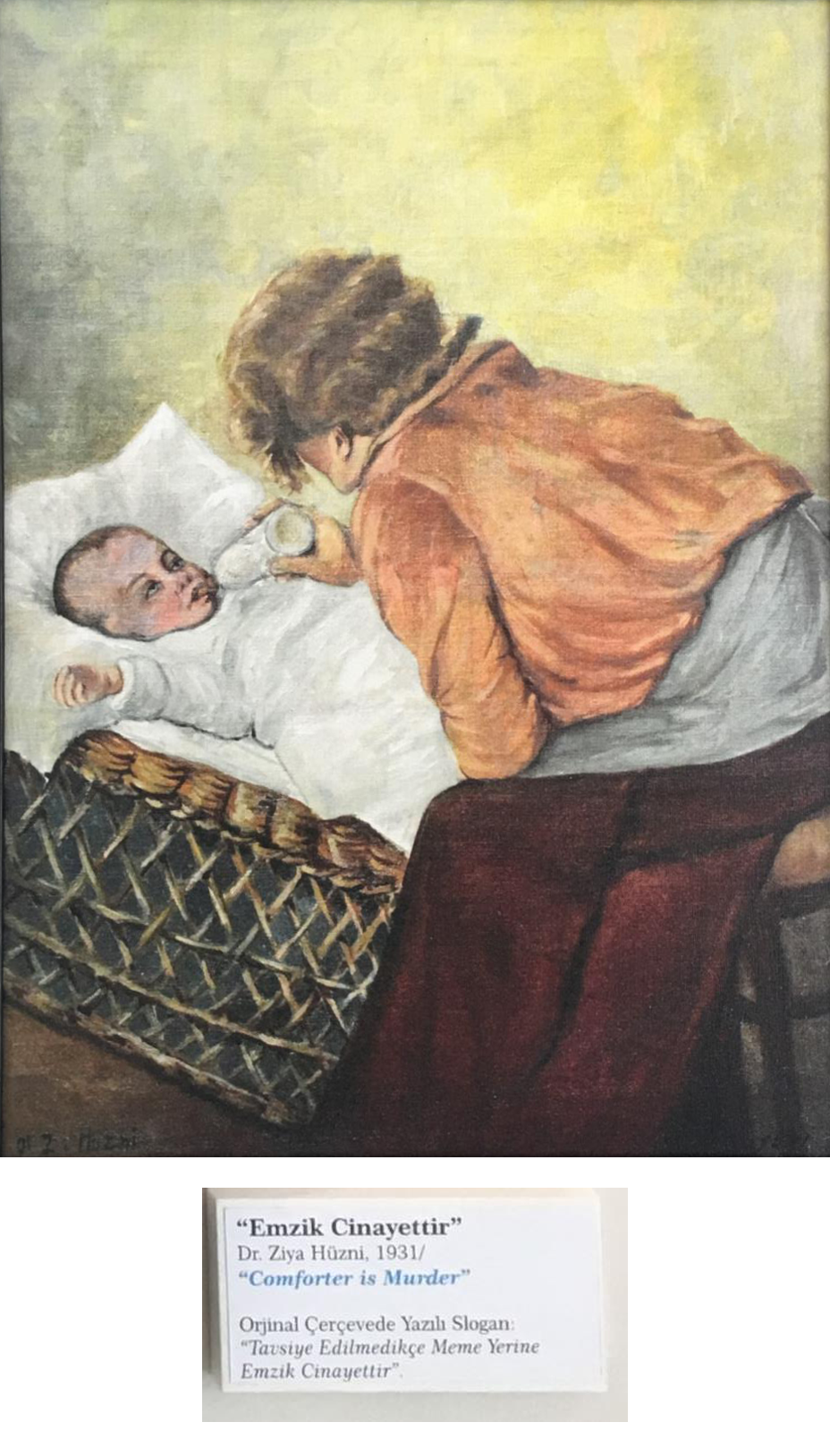
Figure 6. Emzik Cinayettir (Comforter is Murder) by Ziya Hüzni, Korol 1931, oil on canvas.
Current location: İstanbul Sağlık Müzesi
Displayed here with the label it is presented with at the Sağlık Müzesi Sergisi
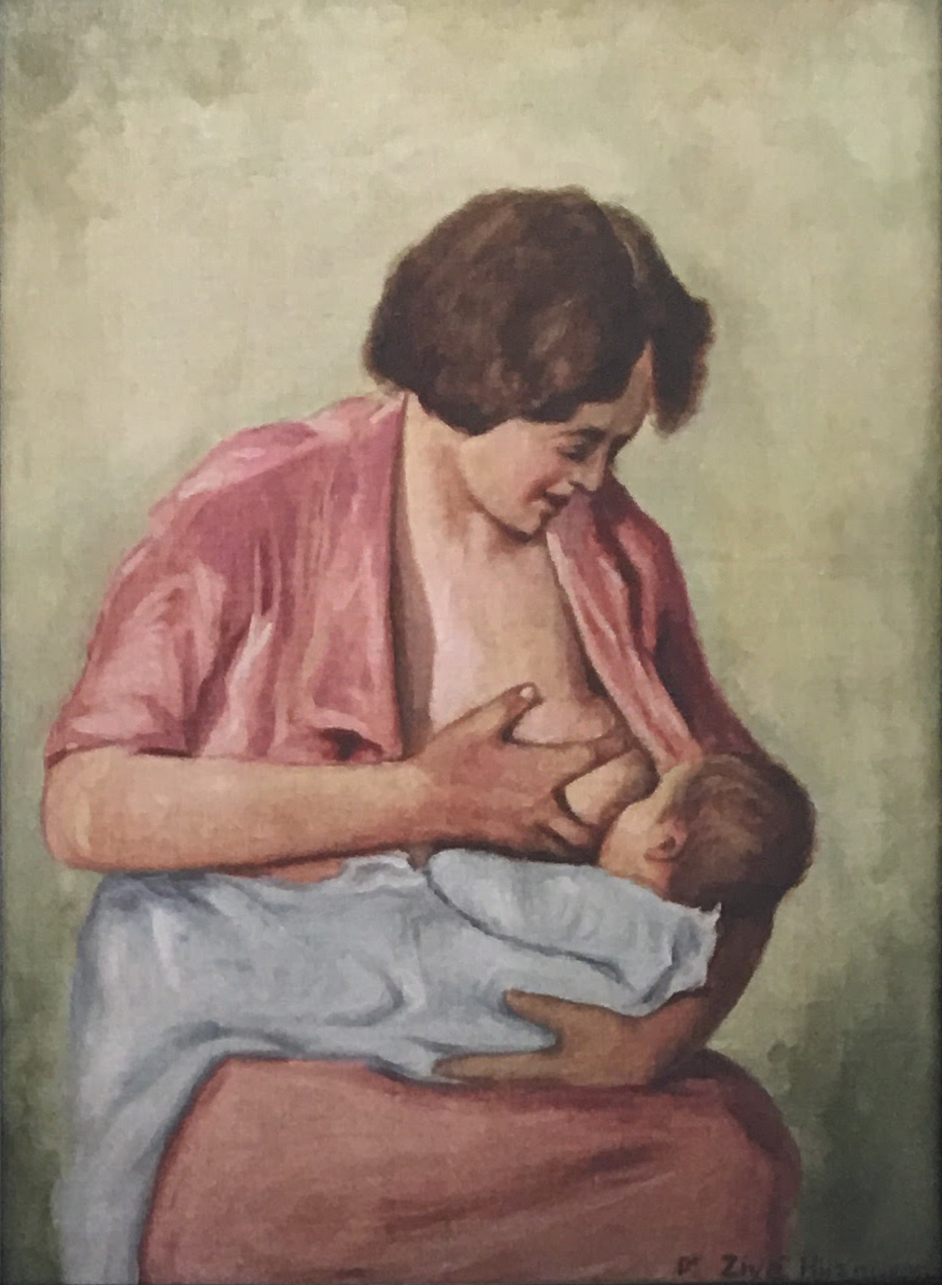
Figure 7. Emziren Anne (The Breast-feeding Mother) by Ziya Hüzni Korol, 1931, oil on canvas.
Current location: İstanbul Sağlık Müzesi
This image of a woman breast feeding a baby is displayed next to the bottle-feeding scene. It contrasts that painting in terms of lighting, use of softer colors, lighter skin tones of both figures chosen by the artist presumably to signify health, and the visibly smiling face of the mother figure.
On display are replicas of both paintings (Figures 6-7). The curators have informed the author that the originals are kept in a climate-controlled storage unit.
Among the Sıhhi Müze collection is a series of paintings by Hikmet Hamdi which tell the story of a man who brings Mycobacterium tuberculosis to his household after stepping on saliva in the streets of İstanbul, ultimately infecting his young child (Figures 3-4). The unsuspecting man and his family are depicted as members of the upper class who live in a well-decorated house with a view (Figure 5). The wife plays the piano and is dressed in European fashion. The man who is the source of the saliva, on the other hand, is painted in headgear that was associated with the lower classes of Turkish society at the time. Looking at these images, we see certain biases of the time regarding socioeconomic class and gender. While the collection has a tendency to depict the lower classes of society as sources of disease, for the most part it envisions women as passive members of society who are defined by their maternal responsibilities in the domestic sphere. For instance, a label that reads “Comforter is Murder” accompanies a painting by Ziya Hüzni (Figure 6). This depiction which labels a woman bottle feeding a baby as ‘murderer’ is currently on display at the Sağlık Müzesi exhibit without any reference to, or contextualization of, the historical biases, intent, and perspectives at the time it was created. Furthermore, the audience awareness factor, a key area of assessment for museum exhibitions according to the American Alliance of Museums (AAM)21, has not necessarily been taken into consideration in the Sağlık Müzesi exhibit. For instance, one of the paintings by Ziya Hüzni is accompanied by a label that repeats verbatim the original text written for it in 1932: “Make sure your kids wear white and blue as the Sun’s highly beneficial UV rays only pass through these colours”; a piece of information that is no longer valid. This label can be misleading for some visitors who might not be properly informed on the subject matter. In the lack of well-informed curatorial decisions and without contextualization, images and objects at venues such as the Sağlık Müzesi exhibit might misinform the public, encourage discriminatory views which accuse ‘the other’ for the spread of disease, or reproduce outdated ideas of the past which envisioned women merely as passive child bearers lacking agency.
Today the Deutsches Hygiene-Museum in Dresden (DHMD), which was the main inspiration behind Hikmet Hamdi’s curatorial decisions at the Sıhhi Müze a over hundred years ago, curates exhibitions that focus on subjects with socio-political connotations such as racism. The Racism exhibit curated by Susanne Wernsing at the DHMD took place between May 2018 and January 2019 with the secondary title The Invention of Human Races.22 This exhibit offered a critique of scientists who tried to identify specific physical features in people of different backgrounds in order to prove the existence of distinct races. In the German context, the Racism exhibit also served as a means of facing the country’s Nazi past with displays of works by artists such as Otto Dix (1891-1969), whose allegorical pieces critical of Nazi ideals had once been deemed as ‘degenerate art’ and burned by the Nazis.23 The Racism exhibit can be defined as a critical medical humanities museum project that goes beyond the clinical realm. It also succeeds in bringing socio-political issues associated with biomedical sciences to the attention of the public. Exhibitions of this sort demonstrate that museums and exhibits of health, hygiene, and medicine have the potential to answer the critical “second wave” of medical humanities’ call for action by critiquing ideas, images, and discourses that carry traces of racial prejudice, gender bias, and discrimination based on socio-economic status (29).
Museums and exhibitions also have the potential to play a key role in the medical and health humanities curriculum by raising awareness about social issues among tomorrow’s healthcare workers and policymakers. A good example of this is the “Health is a Human Right: Race and Place in America” exhibit which took place between September 28, 2013, and April 25, 2014, at the David J. Spencer Museum located on the main campus of the Centers for Disease Control and Prevention (CDC) in Atlanta as part of the twenty-fifth anniversary of the founding of the Office of Minority Health and Healthy Equity (OMHHE) in the United States..24 During its seven months on display the exhibition attracted approximately 50,000 visitors (32). Sarah S. Willen, anthropologist and Director of the Research Program on Global Health and Human Rights at the University of Connecticut, asks one might learn from an exhibition of this nature about the “potential role of museums and museology in sparking public engagement with health and human rights issues” (32). For instance, Bisan A. Salhi and Peter J. Brown combined their lectures on the topics of health and human rights with visits to the “Health is a Human Right: Race and Place in America” exhibit for their introductory undergraduate global health course in 2014. Students enrolled in the class filled out a survey and submitted a reflective essay about “human rights abuses, as well as possibilities for realizing the right to health in the United States” (33). The students’ reflections signaled that they were particularly interested in subjects they learned about for the first time at the exhibit, such as “eugenics and forced sterilization, deficits in water and sanitation, racism, and contradictions of American exceptionalism” (33). Salhi and Brown concluded that exhibitions with an “emphasis on the violations of human rights and their health effects using domestic examples from relatively recent history can be an effective pedagogical strategy” (33). While Willen is more skeptical about how effective exhibitions might be when the rhetorical power of human rights is hardly ever translated to legal or political traction (32), curating exhibitions of this nature can play an important role in shaping the policies of the future by informing the policymakers and healthcare workers about inequalities and human rights abuses of which they might otherwise be unaware.
Concluding Remarks
Medical and health humanities scholars representing the “second wave” argue that a more critical approach can allow us to “see meaning in illness” and “provide a point of resistance to reductive biomedical science” (34). Such approaches could be applied to the exhibitions and displays at museums of health, hygiene, and medicine. The present-day Sağlık Müzesi Sergisi in Istanbul demonstrates how museums and exhibits of health and hygiene often fail to offer a social critique of biomedicine and do not engage in dialogue with the community on controversial matters in medicine and healthcare.
In a broader sense, museums of medicine, health, and hygiene can act as mediators by becoming spaces that welcome public discussions and debates on frequently polarized social constructs and concepts such as gender, race, religion, ethnicity, ability/disability, and health. These debates could be instrumental in democratizing biomedicine and serve as catalysts for other causes, such as the cultivation of empathy, tolerance, and social harmony. In a post-COVID-19 world, we might witness the re-emergence of museums of medicine, health, and hygiene, which incorporate what new technologies have to offer and address the global rather than nationalist issues that concern all of humanity today.24
